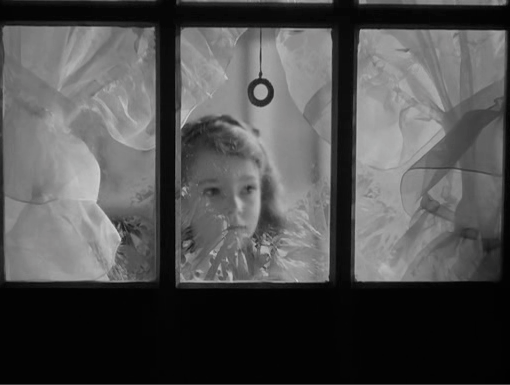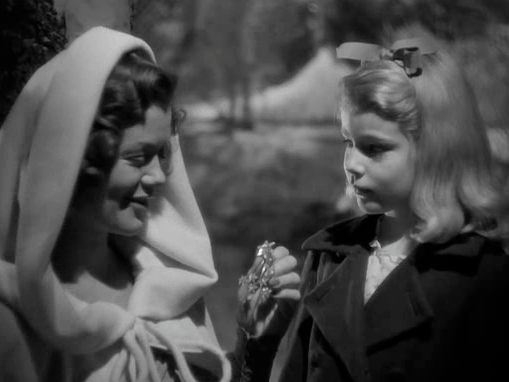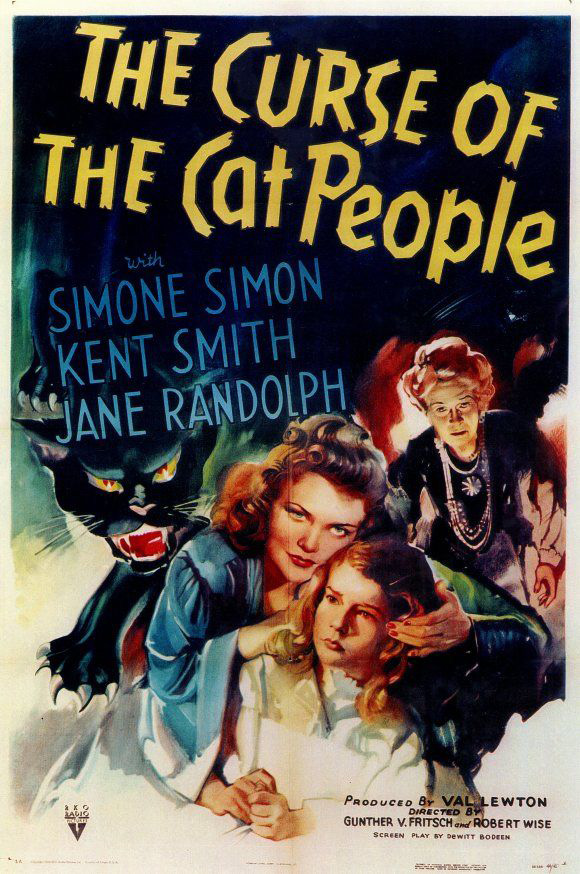The most annoying question I ever get asked in interviews is this one: “You love movies! What’s your favorite movie?” I don’t have a favorite movie. I really don’t. There are lots of movies that I love and think are great films.
But I think there’s one category for which I can absolutely say, “This is my favorite.” Christmas movies. There’s a problem with these. They can be a little too syrupy, like The Bishop’s Wife (1947). They can completely miss the boat, like Santa Claus Conquers the Martians (1964), or they can just not quite measure to what you feel about Christmas.
This is why I think that the most personal kind of movie is a Christmas movie. Since a lot of the Christmas experience reflects the way people feel about themselves and the world, then their choice of a movie will differ greatly too. I think that’s as it should be.
I know a lot of people who love musicals love White Christmas (1954). Well, I don’t. I wish I’d been the director so I could have told Danny Kaye to calm down a little. And the music in White Christmas is annoying because it doesn’t fit the story. It’s more like, “Oh, hey, it’s been five minutes since we have had a musical number. Open up the Irving Berlin Songbook and let’s throw a dart!” Hey, I love Irving Berlin as much as the next guy, but let’s make a little effort to make the songs fit, OK?
Still others love It’s a Wonderful Life (1946). I’ve got to say I have a soft spot for this movie. I really empathize with Jimmy Stewart’s character, who works pretty hard to get what he wants, never gets it, and seems to get a bad break every time breaks are handed out. I’ve often said my life is like this movie except it never gets to the last reel. It’s a Wonderful Life is still a great piece of filmmaking on every level.
I know that there are others of late who champion Remember the Night (1940). I’ve seen it, enjoyed it, but there’s something unsettling in it for me about Barbara Stanwyck’s character. She just seems to me like she could beat me up at any point in the movie. I like Stanwyck perfectly well in other movies, but there’s something about this one that sorta bothered me. Maybe I should give it another chance.
OK, so I’ve listed a bunch of Christmas movies that I didn’t pick, so what will I pick? Well, I’m a sucker for an experimental film, always have been. Give me a film that does something different and braves a new path and I’ll cut it a break like no one else. And the movie I’ve picked is just that, a movie that I still think is unique in all cinema.
Curse of the Cat People (1944).
I hear throngs (or a very small throng, in the case of this blog) of people saying, “WHAT? That’s not a Christmas movie! It’s a horror film, and it’s a sequel at that, and it’s some ghost story. No fair!”
Well, if you think that, then you haven’t seen the film.
See, Curse of the Cat People is maybe the least appropriately titled film ever made. Val Lewton had a deal with the studio, RKO. The deal was that he got fifty cents, a crew, some film, a title, and a few days of studio time. If he turned in a film on time, regardless of what it was, then he got to make another one on the same terms.
Curse of the Cat People really is the story of a lonely, socially awkward young girl who has trouble telling fantasy from reality. It just so happens that she’s the daughter of the surviving couple from Cat People (1942). Amy, the little girl, has a friend who comes to visit her, a ghost named Irena. Irena was the character killed in the first film, played by Simone Simon. The tie-ins to Cat People end there. Gone is all mention of cats and people who turn into them. Lewton had moved on to something else.
Is Irena really a ghost? Is she part of Amy’s imagination? We don’t know. Most of the film, as we see it, is from Amy’s point-of-view, so the things that are real to Amy are real to us, too. I can’t think of another film that does this so effectively. Fortunately, Lewton is not playing a trick on us by shoving a goofy plot twist down our throats. It is what it is, and we never know quite where Amy’s reality ends and objective reality starts. It works perfectly.
I’m also intrigued by the way this film handles the adult characters. Most of the time, the adults are the smart ones who carry the plot forward. In Curse of the Cat People, Amy’s father is a well-meaning boor, well played by Kent Smith. All of the other adults follow his lead. They utterly fail to understand Amy, just as she fails to understand them, and this conflict is what carries the plot along. As a kid, I remember feeling much the same way. Yes, I identify strongly with Amy’s character, which is why this film is so special to me.
The whole thing builds to mid-film segment that is one of my favorite scenes in any movie. Some Christmas carolers arrive at Amy’s house. Like all the other adults in the movie, they are boorish and tacky, even more so because these people are pretending to be spreading Christmas cheer when in reality they’re trying to one-up each other.
 One of the older girls in the party snootily tells Amy that her Christmas traditions aren’t proper. Another caroler bellows false good cheer and reminds the other singers to begin con vivace… except she doesn’t really seem to know what that means. Amy is clearly rather put off by the whole experience. They begin to sing a carol, and Amy’s attention drifts (just as the image’s focus masterfully drifts just a bit…)
One of the older girls in the party snootily tells Amy that her Christmas traditions aren’t proper. Another caroler bellows false good cheer and reminds the other singers to begin con vivace… except she doesn’t really seem to know what that means. Amy is clearly rather put off by the whole experience. They begin to sing a carol, and Amy’s attention drifts (just as the image’s focus masterfully drifts just a bit…)
Outside, over the false carol taking place within, Irena is singing Il est né le divin enfant. It’s a beautiful French carol, sung with equal beauty by Simon. Amy peeps through the window, with just the right amount of winter frost on it, and sees Irena outside, clad in a flowing white gown. The whole thing is lit so wonderfully that it deserves special mention, which I’ll expound upon in a bit.
 This scene brings tears to my eyes every time I see it. I don’t tear up at movies often, and this seems an odd scene, but this one is does it. Amy is so frustrated at the insensitive idiots who surround her that she turns to Irena, who perfectly understands, gives Amy a lovely Christmas present, and sends her back in the house.
This scene brings tears to my eyes every time I see it. I don’t tear up at movies often, and this seems an odd scene, but this one is does it. Amy is so frustrated at the insensitive idiots who surround her that she turns to Irena, who perfectly understands, gives Amy a lovely Christmas present, and sends her back in the house.
It’s breathtakingly simple, but stunningly effective. It calls out the hypocrisy of the Christmas season while celebrating the simple joys we can still find in it.
Amy also befriends an older woman, a former actress, named Mrs. Farren. This is another wonderful element in the film. Mrs. Farren may, or may not, be slightly doddered with old age. And it doesn’t matter if she is, for Amy loves her regardless, unlike her daughter (Elizabeth Russell). Mrs. Farren says that this is not her daughter, but rather a caretaker. She is heartbroken but insists otherwise. Amy doesn’t know. She doesn’t particularly care, either.
The film builds to its plot climax in several ways: Amy’s father insists that she get a little more grounded in the “real world,” whatever that is. He punishes her for insisting that Irena’s ghost is real. Amy runs away to Mrs. Farren’s house, but gets lost and mistakes the sound of a car for the sound of the headless horseman. In one of her theatrical moods, Farren had told Amy the story, and, of course, Amy takes it as literal truth.
Will Amy’s parents wake up to the fact that they have a unique, sensitive child? Will Amy have to give up believing in her only friend, Irena? Will Mrs. Farren or her slinky daughter be a help or an hindrance? It all comes to a climax I still love but others criticize as sloppy and unfinished.
I prefer to see it as open-ended, because Amy will continue to be disheartened by people who don’t understand her, and Amy’s parents will have to do a much better job in trying to do just that.
 I’m sure RKO must have hated this film. It’s a marketing nightmare. Despite the fact it shares several cast members from the first film, Curse has almost nothing to do with it. The posters from the original release are misleading at best and deceptive at worst.
I’m sure RKO must have hated this film. It’s a marketing nightmare. Despite the fact it shares several cast members from the first film, Curse has almost nothing to do with it. The posters from the original release are misleading at best and deceptive at worst.
Curse of the Cat People is director Robert Wise’s first film. He replaced Gunther Von Fritsch, who was running behind schedule. Of course, the whole tone of the film was shaped by producer and uncredited co-writer Val Lewton, who was always the main creative force behind his films. Wise had been an editor at RKO, and a very good one. He cut Citizen Kane and The Magnificent Ambersons. He learned a great deal from Welles and a great deal from Lewton.
There are a number of directors who have come to that job through being editors. These directors tend to be very technical people and often make sterile films with weak acting performances. This is because they’ve not been trained to work with actors, but they know how to set up a scene and shoot it. One person that leaps to mind here is James Cameron, who needs to have a cast of ace actors in order to overcome his technical orientation. George Lucas started as an editor and claims it was his favorite job. We know how good he is with actors! Peter R. Hunt, director of On Her Majesty’s Secret Service (1969) was a top editor and cut all the early James Bond pictures. OHMSS still strikes me as a well-crafted film with a set of bloodless performances, Diana Rigg excepted.
Yet Wise does not fall into this trap. All of the performances in Curse of the Cat People are spot-on. One might argue that Kent Smith’s delivery is a little wooden, but then he always came off a bit that way. Overall, his performance is great. Of particular note is Ann Carter as Amy, who delivers one of the best performances by a child actress I have ever seen. It would be a tough role even for an adult, but this kid handles it like a pro. I know that Wise had to work with her extensively, because it shows.
And the most un-sung of all is Nicholas Musuraca, the director of photography. Why is it that we read reams of praise for photographers Gregg Toland, William Daniels, Joseph August and Joseph Valentine, but this guy is almost completely forgotten today? Musuraca was one of the top DPs for the film noir movement: he shot The Hitch-Hiker (1953), Clash by Night (1952), Out of the Past (1947), and The Spiral Staircase (1946) among others.
He also shot most of the Lewton pictures. I note that the lovely Simone Simon suddenly lost a lot of her beauty in Val Lewton’s Mademoiselle Fifi (1943), a beauty she regains in Curse of the Cat People. I wondered why this was, since the difference is so stark. I came to realize that Fifi is the only Lewton/Simon film that Musuraca didn’t shoot. It shows. Sadly, Musuraca ended up doing TV work, mostly because he needed the cash, not like Karl Freund, who had basically retired when he agreed to do I Love Lucy.
Every time I see Curse of the Cat People, I’m struck by just how right the lighting is. And it changes subtly when the mood changes. It’s actually a little starker when Amy is with Irena than in the interior scenes in the house. It’s as if Irena is more real to Amy than the rest of her life.
(A full disclosure side note: those who know me will say I’m incredibly biased towards Curse of the Cat People because of Simone Simon. I’ve always considered her to be one of the hottest women in movies. Yeah, OK, maybe it’s fair to point this out, but Simon isn’t especially sexy in Curse of the Cat People. She’s ghostly and ethereal, admittedly beautiful. If you want to see her in a sexy part, I recommend The Devil and Daniel Webster [1941]. Ohhhhhhh.)
I do have an ulterior motive here. Every year, someone asks me to do a Christmas movie, which is always a fun thing to schedule. But every year I suggest Curse of the Cat People and people look at me like I’ve just come from Mars. I tell them that, no, it isn’t what you think, but they never give it a chance anyway.
Now, at least, I can point them to this blog entry and give them my argument for why this is a great Christmas movie. Of course it is, but it’s a great movie as well. All Hail Val Lewton, a master indeed.
